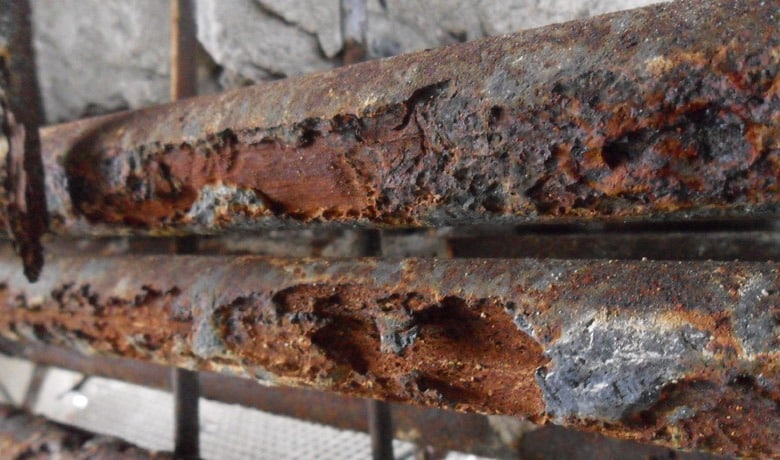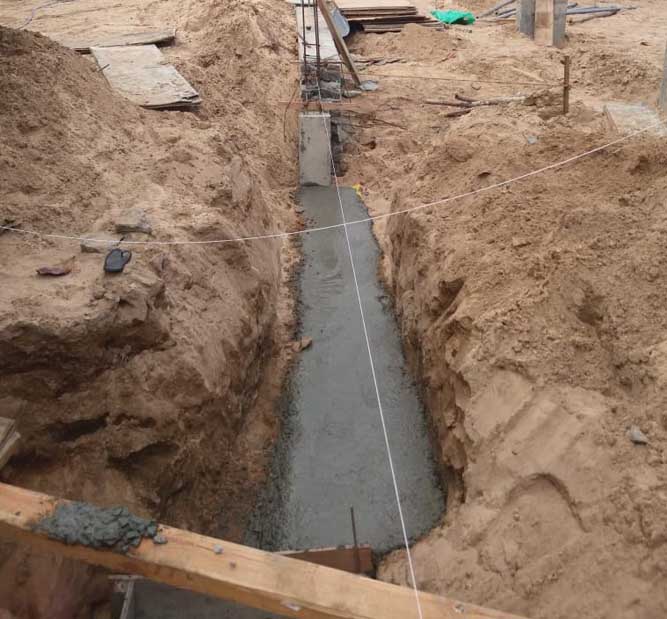Corrosion of reinforcing steel bars, commonly known as rebar, is a significant concern in the construction industry. It can compromise the structural integrity of buildings and infrastructure, leading to safety hazards and costly repairs. In this article, we will explore effective tips and techniques to combat rebar corrosion, ensuring the longevity and durability of structures.
Rebar corrosion is a chemical process that occurs when steel reinforcing bars within concrete structures react with the environment. It weakens the steel, reduces its load-bearing capacity, and ultimately leads to structural deterioration. However, with the right preventive measures and maintenance strategies, corrosion can be effectively combated.
Rebar corrosion is primarily caused by the presence of moisture, oxygen, and chloride ions in the concrete environment. When these elements come into contact with the steel bars, an electrochemical reaction takes place, resulting in the formation of rust. Over time, the rust expands, causing cracks and spalling in the surrounding concrete.
Factors Contributing to Rebar Corrosion
Several factors contribute to corrosion, including:
- Exposure to marine or coastal environments with high salt content.
- Insufficient concrete cover over the rebar.
- Poor-quality concrete or improper mix proportions.
- Presence of cracks or voids in the concrete.
- Carbonation of concrete due to prolonged exposure to carbon dioxide.
Understanding these factors is crucial for implementing effective corrosion prevention strategies.
What Cause Rebar Corrosion
Corrosion is primarily caused by the interaction of several factors in the concrete environment. The main contributors to corrosion include:
- Moisture: The presence of moisture, such as water or humidity, is a critical factor in rebar corrosion. Moisture provides the necessary medium for the electrochemical reactions to occur between the rebar and the surrounding environment.
- Oxygen: Oxygen is another essential element for corrosion. In the presence of moisture, oxygen reacts with the iron in the rebar, initiating the corrosion process. Oxygen can penetrate concrete through cracks, voids, or inadequate concrete cover.
- Chloride Ions: Chloride ions, often found in seawater, deicing salts, or coastal environments, significantly contribute to rebar corrosion. Chloride ions can penetrate the concrete and reach the rebar surface, where they promote the corrosion process by breaking down the passive film that protects the rebar from corrosion.
- Carbonation: Carbonation occurs when carbon dioxide from the atmosphere reacts with the alkaline compounds in concrete. This reaction reduces the alkalinity of the concrete, which can lead to the breakdown of the passive film on the rebar surface, making it susceptible to corrosion.
- Concrete Quality: Poor-quality concrete or improper mix proportions can increase the risk of corrosion. Insufficient concrete cover over the rebar, high water-to-cement ratio, inadequate compaction, or the presence of deleterious substances in the concrete can compromise the protective properties of the concrete and accelerate the corrosion process.
- Environmental Factors: Environmental conditions play a crucial role in rebar corrosion. Structures located in aggressive environments, such as coastal areas or industrial zones with high levels of pollutants, are more susceptible to corrosion. Factors such as temperature variations, humidity, and exposure to chemicals can exacerbate the corrosion process.
- Galvanic Corrosion: Galvanic corrosion can occur when dissimilar metals are in contact within the concrete. When two different metals (such as steel rebar and stainless steel connectors) come into contact in the presence of an electrolyte (moisture), an electrochemical reaction can take place, leading to accelerated corrosion of the less noble metal (rebar).
Understanding the causes of rebar corrosion is crucial for implementing effective preventive measures and maintenance strategies. By addressing these factors and employing appropriate corrosion prevention techniques, the risk of corrosion can be minimized, ensuring the durability and longevity of structures.

Consequences of Rebar Corrosion
Rebar corrosion can have significant consequences on the structural integrity and durability of buildings and infrastructure. Here are some of the key consequences of corrosion:
- Reduced Load-Bearing Capacity: As rebar corrodes, it loses its strength and load-bearing capacity. This can compromise the structural stability of the affected elements, such as beams, columns, and slabs. The weakened rebar may not be able to withstand the intended loads, leading to structural failures or collapses.
- Cracking and Spalling of Concrete: Corroding rebar expands in size, exerting pressure on the surrounding concrete. This pressure can cause cracking and spalling of the concrete cover. Cracks allow more moisture, oxygen, and chloride ions to penetrate the concrete, accelerating the corrosion process and further compromising the structure’s integrity.
- Structural Deterioration: Over time, the continuous corrosion of rebar can result in significant deterioration of the structure. This deterioration can manifest as widespread concrete cracking, loss of structural elements’ cross-sectional area, and overall loss of structural integrity. The structural elements may become structurally unsound, requiring extensive repairs or even replacement.
- Safety Hazards: Rebar corrosion poses serious safety hazards to occupants and users of the affected structures. The weakened structural elements may fail suddenly, leading to collapses or falling debris, endangering lives and causing injuries or fatalities. It is crucial to address corrosion promptly to ensure the safety of individuals within and around the structure.
- Increased Maintenance and Repair Costs: Dealing with rebar corrosion can be costly. Repairing or replacing corroded structural elements requires significant resources, including materials, labor, and engineering expertise. Additionally, preventive measures such as protective coatings, cathodic protection systems, and regular inspections add to the maintenance costs over the lifespan of the structure.
- Disruption and Downtime: When corrosion issues arise, it often necessitates disruptions to the normal functioning of the affected structures. Repair and remediation work may require temporary closure of buildings, rerouting of traffic, or the relocation of occupants. This can result in inconvenience, business disruptions, and financial losses.
- Decreased Asset Value: Rebar corrosion can significantly reduce the value of a structure or infrastructure asset. The compromised structural integrity, increased maintenance requirements, and potential safety concerns diminish the market value and desirability of the property. It becomes essential to address corrosion to maintain the asset’s value and avoid potential depreciation.
It is crucial to understand the potential consequences of corrosion and take proactive measures to prevent and address it. Regular inspections, proper maintenance, the use of corrosion-resistant materials, and adherence to corrosion prevention guidelines are essential in safeguarding structures against the detrimental effects of rebar corrosion.
Factors to Control in Rebar Corrosion
Concrete Mix Design
A well-designed concrete mix plays a vital role in combating rebar corrosion. Consider the following factors during mix design:
- Use high-quality materials: Option for high-grade cement, aggregates, and water.
- Proper water-cement ratio: Maintain an optimal ratio to achieve strong, dense concrete.
- Supplementary cementitious materials: Incorporate materials like fly ash or silica fume to enhance durability.
- Corrosion inhibitors: Add admixtures that reduce the corrosive effects of chloride ions.
Proper Reinforcement Placement
Correct placement of rebar within the concrete is crucial for preventing corrosion. Follow these guidelines:
- Adequate concrete cover: Ensure sufficient concrete cover over the rebar to protect against corrosion.
- Proper spacing: Maintain appropriate spacing between rebar bars to avoid congestion.
- Alignment and support: Align and support the rebar properly to prevent displacement during concrete pouring.
Protective Coatings and Treatments
Applying protective coatings and treatments to the rebar surface provides an additional layer of defense against corrosion. Some commonly used methods include:
- Epoxy coatings: These coatings create a barrier between the rebar and the surrounding environment, preventing moisture and chloride ingress.
- Zinc-rich primers: These primers provide cathodic protection by sacrificing themselves to protect the rebar from corrosion.
- Galvanization: Coating the rebar with a layer of zinc provides long-term corrosion resistance.
- Corrosion inhibitors: These compounds are added to the concrete mix to slow down the corrosion process and extend the lifespan of the rebar.
Cathodic Protection Systems
Cathodic protection is an effective technique used to prevent rebar corrosion. It involves the application of an external electrical current to the rebar, which shifts the corrosion potential and stops the electrochemical reactions. There are two types of cathodic protection systems commonly used:
- Sacrificial anode system: In this method, sacrificial anodes made of materials like zinc or aluminum are connected to the rebar. The anodes corrode instead of the rebar, providing protection.
- Impressed current system: This system utilizes an external power source to provide a continuous electrical current to the rebar, effectively stopping the corrosion process.
Regular Maintenance and Inspection
Regular maintenance and inspection are vital to identify and address potential corrosion issues. Some key maintenance practices include:
- Cleaning and washing: Remove dirt, debris, and chloride-contaminated substances from the concrete surface.
- Crack sealing: Seal any cracks in the concrete promptly to prevent moisture and chloride penetration.
- Reapplication of protective coatings: Periodically inspect and reapply protective coatings as needed.
- Monitoring chloride levels: Regularly test the chloride ion concentration in the concrete to assess the corrosion risk.
Early Detection and Remediation
Early detection of rebar corrosion allows for timely remediation, preventing further damage to the structure. Techniques such as corrosion monitoring sensors, half-cell potential measurements, and visual inspections can help identify corrosion in its early stages. Once corrosion is detected, appropriate repair methods, such as removing corroded concrete and applying repair mortars, should be implemented promptly.
Sustainable Corrosion Prevention
In recent years, sustainable corrosion prevention methods have gained prominence. These techniques aim to minimize the environmental impact of corrosion prevention while ensuring long-term structural integrity. Examples include using environmentally friendly corrosion inhibitors, incorporating recycled materials in concrete mix design, and promoting life cycle assessment to optimize corrosion prevention strategies.
Importance of Professional Expertise
Combatting rebar corrosion requires expertise and knowledge in corrosion prevention techniques. Engaging professionals such as structural engineers, corrosion specialists, and concrete contractors is crucial to implementing effective strategies, conducting thorough inspections, and performing quality repairs.
Preventing corrosion is essential for maintaining the longevity and safety of structures. By following proper construction practices, implementing corrosion prevention measures, and conducting regular maintenance, the detrimental effects of corrosion can be mitigated. Remember, early detection and timely remediation are key to combating rebar corrosion effectively.
FAQs
- What causes corrosion?
- Corrosion is primarily caused by the presence of moisture, oxygen, and chloride ions in the concrete environment.
- How can corrosion be prevented?
- Corrosion can be prevented through measures such as proper concrete mix design, adequate reinforcement placement, protective coatings, cathodic protection systems, regular maintenance, and early detection.
- Are there eco-friendly methods to combat rebar corrosion?
- Yes, sustainable corrosion prevention methods, such as using environmentally friendly corrosion inhibitors and
- How often should corrosion inspections be conducted?
- Regular inspections for corrosion should be conducted at least once a year, or more frequently in corrosive environments or structures with a history of corrosion issues.
- Can corrosion be repaired?
- Yes, corrosion can be repaired. The extent of the repair depends on the severity of the corrosion. It may involve removing corroded concrete, applying repair mortars, and reapplying protective coatings.
- What are the signs of corrosion?
- Signs of rebar corrosion include cracks, spalling or flaking concrete, rust stains on the surface, and visible signs of rusted rebar protruding from the concrete.
- How long does corrosion take to cause significant damage?
- The time it takes for corrosion to cause significant damage varies depending on factors such as environmental conditions, quality of concrete, and exposure to corrosive elements. In some cases, significant damage can occur within a few years, while in others, it may take several decades.
- Can rebar corrosion be prevented in existing structures?
- While it is more challenging to prevent corrosion in existing structures, measures such as applying protective coatings, conducting regular maintenance, and implementing cathodic protection systems can help mitigate the corrosion process.


